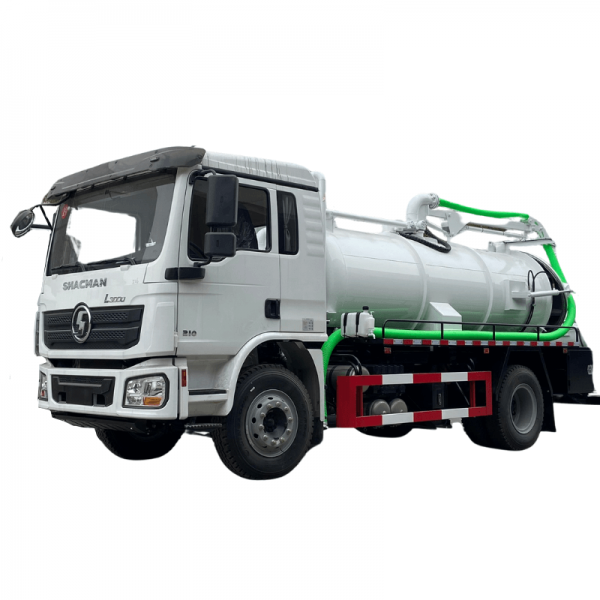Ensuring Efficiency and Safety A Comprehensive Guide to Garbage Compactor Truck Industry Standards

Introduction
Garbage compactor trucks play a vital role in managing waste collection and disposal efficiently. These specialized vehicles are equipped with compactors that compress the waste, allowing for increased storage capacity and reducing the frequency of trips to disposal sites. To ensure the safe and effective operation of garbage compactor trucks, industry standards have been established to govern the design, construction, operation, and maintenance of these vehicles. In this comprehensive guide, we will delve into the various industry standards that govern the garbage compactor truck sector.
1. Overview of Garbage Compactor Trucks
Garbage compactor trucks, also known as refuse compactors or trash compactors, are vehicles designed to collect and compact waste materials for transportation to disposal sites. These trucks are commonly used by municipalities, waste management companies, and other organizations responsible for waste collection and disposal. The key components of a garbage compactor truck include the compactor mechanism, storage compartment, hydraulic system, and control panel.
2. Importance of Industry Standards
Industry standards are crucial in ensuring the safety, efficiency, and reliability of garbage compactor trucks. These standards are developed by regulatory bodies, industry associations, and other stakeholders to establish minimum requirements for the design, construction, operation, and maintenance of these vehicles. Adhering to industry standards helps manufacturers produce high-quality trucks, operators to safely and effectively use the vehicles, and regulatory authorities to enforce compliance with regulations.
3. Design Standards
Design standards for garbage compactor trucks cover various aspects of the vehicle's construction and layout. These standards specify requirements for the size and capacity of the compactor mechanism, the structural integrity of the storage compartment, the placement of safety features such as warning lights and backup alarms, and the accessibility of controls for the operator. Design standards also address considerations such as ergonomics, visibility, and maneuverability to ensure that the truck can effectively navigate urban environments and access collection points.
4. Construction Standards
Construction standards outline the materials, components, and manufacturing processes that should be used in building garbage compactor trucks. These standards specify the quality and durability of structural elements, the corrosion resistance of metal components, and the strength of hydraulic systems. Construction standards also address issues such as noise levels, emissions control, and fire safety to minimize environmental impact and protect the health and safety of operators and the public.
5. Operational Standards
Operational standards govern the use of garbage compactor trucks during waste collection and transportation activities. These standards cover procedures for loading and unloading waste materials, operating the compactor mechanism, securing the storage compartment during transit, and maintaining vehicle stability on uneven terrain. Operational standards also address driver training, route planning, and communication protocols to ensure that garbage compactor trucks are used safely and efficiently in daily operations.
6. Maintenance Standards

Maintenance standards specify the inspection, servicing, and repair procedures that should be followed to keep garbage compactor trucks in optimal working condition. These standards outline the recommended maintenance schedule for key components such as the compactor mechanism, hydraulic system, brakes, and tires. Maintenance standards also address the documentation of maintenance activities, the training of maintenance personnel, and the use of genuine replacement parts to prolong the service life of garbage compactor trucks and prevent breakdowns.
7. Compliance and Certification
Compliance with industry standards is essential for manufacturers, operators, and regulatory authorities to ensure the safety and quality of garbage compactor trucks. Manufacturers must meet design and construction standards during the production process and undergo testing and certification to demonstrate compliance. https://www.heli-truck.com/aerial-platform-truck/ are responsible for adhering to operational and maintenance standards during the use of garbage compactor trucks and may be subject to inspections and audits by regulatory authorities to verify compliance.
8. Evolution of Industry Standards
Industry standards for garbage compactor trucks continue to evolve in response to technological advancements, regulatory changes, and emerging trends in waste management. New standards may be introduced to address issues such as alternative fuel sources, autonomous operation, and digital monitoring systems. Industry stakeholders, including manufacturers, operators, and regulatory authorities, collaborate to develop and implement updated standards that reflect the latest best practices and innovations in the garbage compactor truck sector.
Conclusion
Garbage compactor trucks are essential tools for managing waste collection and disposal efficiently, and industry standards play a critical role in ensuring the safety, reliability, and sustainability of these vehicles. By adhering to design, construction, operational, and maintenance standards, manufacturers, operators, and regulatory authorities can work together to promote best practices and continuous improvement in the garbage compactor truck industry. As technology advances and environmental concerns grow, industry standards will continue to evolve to meet the changing needs of waste management and support a cleaner, healthier future for communities around the world.
